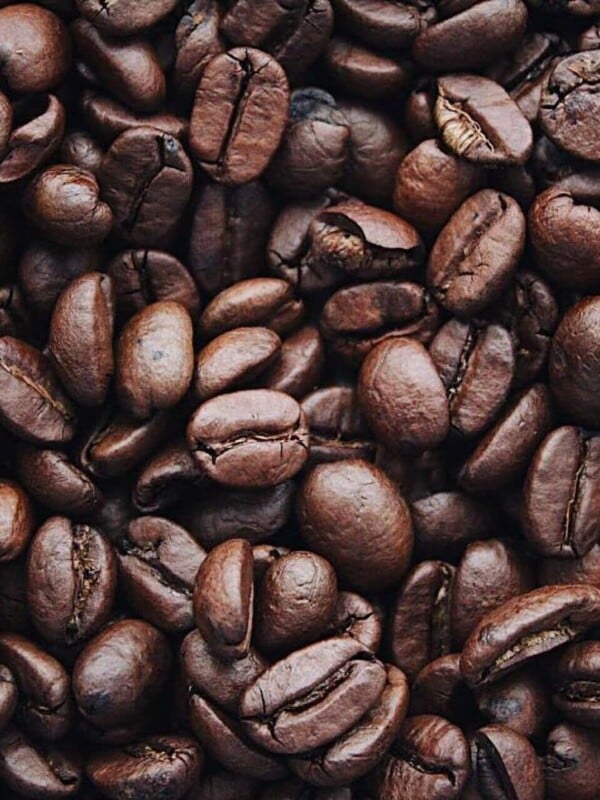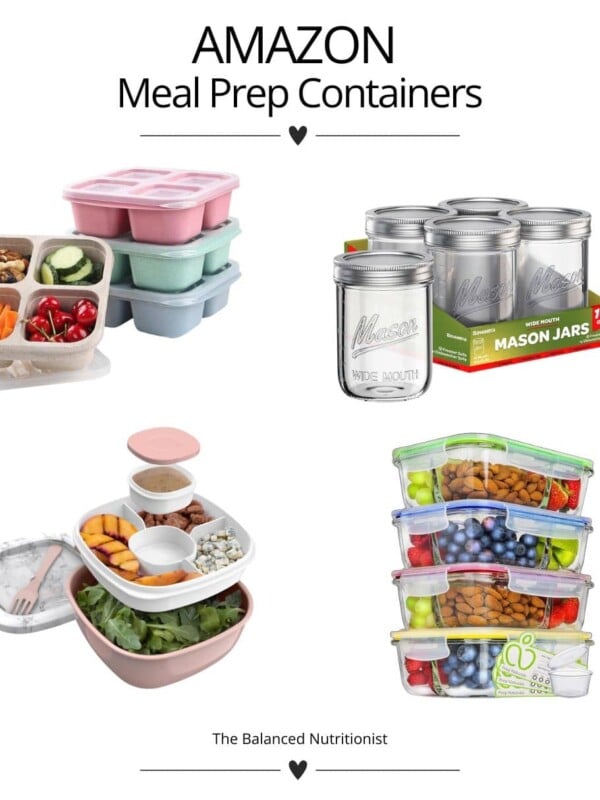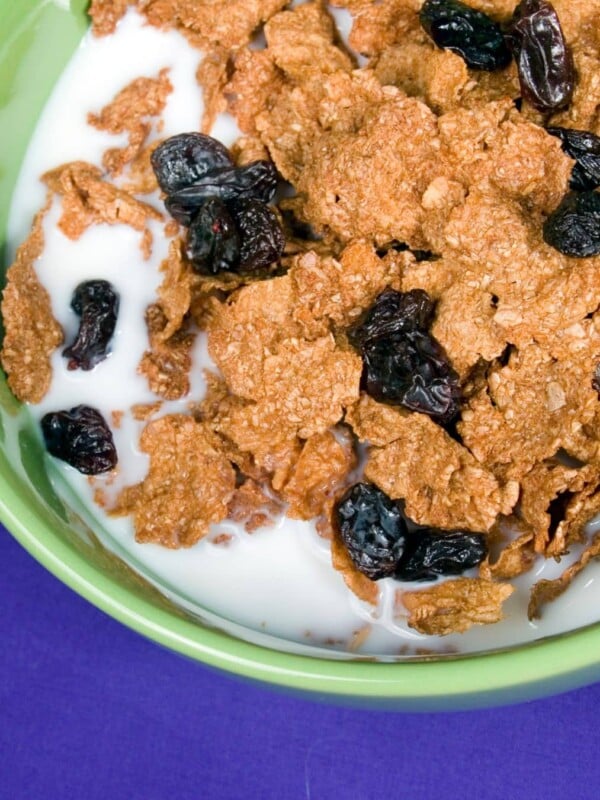This post may contain affiliate links. Please read our disclosure policy.
You’ve probably heard about the super intense viral wellness trend: 75 hard. 75 days of strict eating, 90 minutes of exercise each day, and absolutely no cheating. Woof.
So what’s the 75 soft challenge that’s been floating around Tiktok? Is it easier? Is it effective? Is it worth it? I’m Jamie, I’m a Registered Dietitian and I’ve helped hundreds of people find balance with food and build healthy habits that actually stick.
In this article I’ll guide you through what the 75 soft challenge is, the rules, and my professional tips for improving your health.
What is the 75 Day Soft Challenge?
The 75 soft challenge is an easier, more flexible alternative to the popular 75 hard challenge.
The rules aren’t as strict and the requirements aren’t nearly as grueling. But don’t be fooled, the 75 day soft is still a challenge. Committing to any lifestyle changes is hard, especially when you’re locking yourself in for 75 days straight.
Let’s get into what you actually have to do in the 75 soft challenge (and if you should!).
75 Soft Challenge Rules
1. Eat well and only drink alcohol during social occasions
The challenge calls for 75 days of “eating well”, so the requirements are pretty vague. The positive? You can choose whatever healthy eating style works best for you.
If you’re unsure about which diet pattern is right for you, this is a tricky recommendation and could potentially have you trying to eat way more strictly than you need to.
To combat this, I recommend focusing on healthful foods you can add into your day during the challenge. Foods like: fruits and vegetables, whole grains, protein, nuts and seeds, whole grains, and legumes.
Focusing on adding healthy foods to your day versus cutting foods out is hands down the best way to approach any diet changes.
To do this, you’re gonna need quick and easy balanced meal ideas, so don’t miss my article on
How to Eat Healthy Without Cooking.
Alcohol isn’t completely off limits, but it’s important to still add some mindfulness here. If you’re someone with a busy social calendar, only drinking during social occasions can add up quickly.
2. Drink 3 liters of water per day
The challenge calls for a water goal of 3 liters per day. While it’s a perfectly fine water goal for many people, keep in mind that water goals greatly vary from person to person (1).
One of the easiest ways to know you’re drinking enough water: your pee will be pale yellow to clear.
My recommendation? Slowly up your water goal each week until you find a water goal that has you feeling good and hydrated. The classic 8 cups (64 oz or 2 liters) is a good starting place.
If you struggle to drink more water, try using a bigger water bottle (less fill-ups), a straw (more accessible to drink), or flavoring your water with drops, powders and sliced fruit.
3. Exercise for 45 minutes every day with 1 active recovery day per week
There are no rules for what you do or where you do it when it comes to physical activity in the 75 soft challenge.
But, you do have to exercise for 45 minutes, 6 days per week… with 1 active recovery day thrown in. Active recovery refers to low-intensity workouts like yoga, walking, swimming or leisurely cycling (2).
Here’s where the challenge gets truly hard for many people. While 45-minute workouts every single day can be totally fine, it’s a lot to start out with if you’re not currently getting any exercise.
More movement is a GOOD thing for sure. The physical activity recommendation for adults is 150 minutes of moderate-intensity activity and two days of strength training (3). Most people are not even coming close to that recommendation, so building up to that is a great goal.
If you’re set on completing this challenge, don’t be afraid to dial back the intensity of your workouts to keep them sustainable (aka you don’t need to be sweating your buns off every single workout).
If 45-minute workouts feel insane, scale it back to 20 or 30 minutes. The goal should be sustainability so that when the 75 days are over, you don’t stop exercising completely.
4. Read 10 pages of any book each day
During the 75 soft challenge, you’re required to read 10 pages of any book every day. I love this one for so many reasons, but let’s talk about how it can influence your diet choices.
High levels of stress can negatively influence which foods you choose to eat, and poor sleep patterns actually make your hunger hormones go up and satiety hormones go down (4,5). Have you ever noticed how much harder it is to make healthy food choices or exercise when you’re stressed and sleep deprived?
Reading can help reduce stress and set you up for a solid night of sleep (6). So, cozy up with a good book every day and I think you’ll be surprised how it translates into making healthier choices!
No progress pictures required
Unlike the 75 hard challenge, you don’t have to take daily progress pictures.
Personally, I’m a major fan of this difference! For a lot of people, progress pictures just aren’t the right move. They can make you obsess over your body, your imperfections, and negatively impact your body image.
When you’re making any lifestyle changes I recommend tracking how you’re feeling, both physically and mentally.
75 hard vs 75 Soft
75 Hard Challenge Rules
So, what’s the difference? Here are the five 75 hard challenge rules:
- Follow a diet with no “cheat” meals at all or alcohol
- Drink 1 gallon water per day
- Two 45 minutes workouts per day, one must be outside
- 10 pages of non-fiction reading per day
- Take a progress picture every day
The biggest difference between the two 75-day challenges is that the soft challenge isn’t nearly as intense.
It’s more flexible and a little bit more realistic.
With the 75 soft challenge, your diet plan can be whatever you want it to be. You’re not obligated to chug a gallon of water, your workouts are more realistic time-wise (though still difficult!), you can read whatever you want, and there are no progress pictures.
A Dietitian’s 75 Soft Challenge Review
Okay, now that we’ve covered exactly how to do the challenge, let’s weigh the pros and cons of actually committing to the 75 soft.
Pros
- For some people, challenges can be a fun and helpful way to kick off some healthy habit changes.
- Encourages daily wellness habits like exercise, hydration, and better eating habits.
- Takes the focus off of physical appearance with no progress pictures.
- Aims to build consistency by incorporating habits every single day.
- Encourages more reading, which can be great for stress reduction and better sleep.
- May help some people feel motivated and excited to work on healthy changes.
Cons
- For many, challenges can be frustrating because they’re too intense, too much at once and generally just not attainable enough.
- Starting four new habits at the same time for 75 days straight is difficult to stick to.
- Challenges in general can promote the “all or nothing” mindset, aka being really strict for a period of time, and then doing nothing.
- The advice to “eat well” is vague and doesn’t have context or specific recommendations.
- Exercise goals are intense, especially for someone who isn’t currently exercising.
- The water goal is the same for everyone, but we all have different hydration needs.
- It doesn’t necessarily result in long-term success because you may feel burnt out after the challenge is over. That means any “results” might not keep.
- It’s not appropriate for anyone who’s struggled with an eating disorder or disordered eating.

75 Soft Challenge Results
Will you get results if you complete the 75 soft challenge? Honestly, probably! Adding any healthy habit to your life for 75 days straight is no doubt going to have a positive impact on you. But remember, what matters more is if those results can be sustained.
If you feel great at the end but you’re so sick of being “good” that your habits go in the total opposite direction, it defeats the purpose.
If you’re set on doing this challenge, head into it with a flexible mindset.
You truly don’t need to be perfect to achieve a healthier lifestyle. When the 75 days are up, don’t forget to reflect on your habit changes and come up with a plan to make them a permanent part of your life (maybe dialed back a bit!).
What Else Can You Do?
If you’re not convinced this is the challenge for you, here’s what I recommend!
Pick one new habit to work on each week. Here are some ideas:
- Focus on the basics of eating consistently.
- Add a serving of veggies at dinner each day.
- Add more protein to your meals so that you stay full.
- Prioritize well-timed, balanced snacks.
- Set a doable exercise goal like 20 minutes, 3x/week to get started.
Each week, set aside some time to reflect on your progress. What’s going well? What could have gone better? How can you tweak your habits and intentions to make the next week feel like a win?
Use these journal prompts to get started!
75 Soft Challenge Printable: Free Habit Tracker PDF
Whether or not you decide to do this challenge, I want to give you a way to start tracking your goals. Grab your free downloadable habit tracker PDF here.
The Bottom Line
Compared to its much more difficult counterpart, the 75 day soft challenge definitely sounds like a cake walk. But make no mistake, it’s anything but soft. It still requires extreme lifestyle changes.
When it comes to being healthy, weight loss, longevity, or whatever your goals are, what matters most is what you’re doing over the span of months and years.
If you complete the challenge and then go back to your old (and maybe less healthy) habits, it’s unlikely that it’s going to improve your long-term health.
Whether you do this challenge or opt for something more sustainable, just remember that what you’re doing most of the time is what matters most.
You’ll Also Love:
Why Do I Keep Eating After I’m Full (And What To Do About It)













